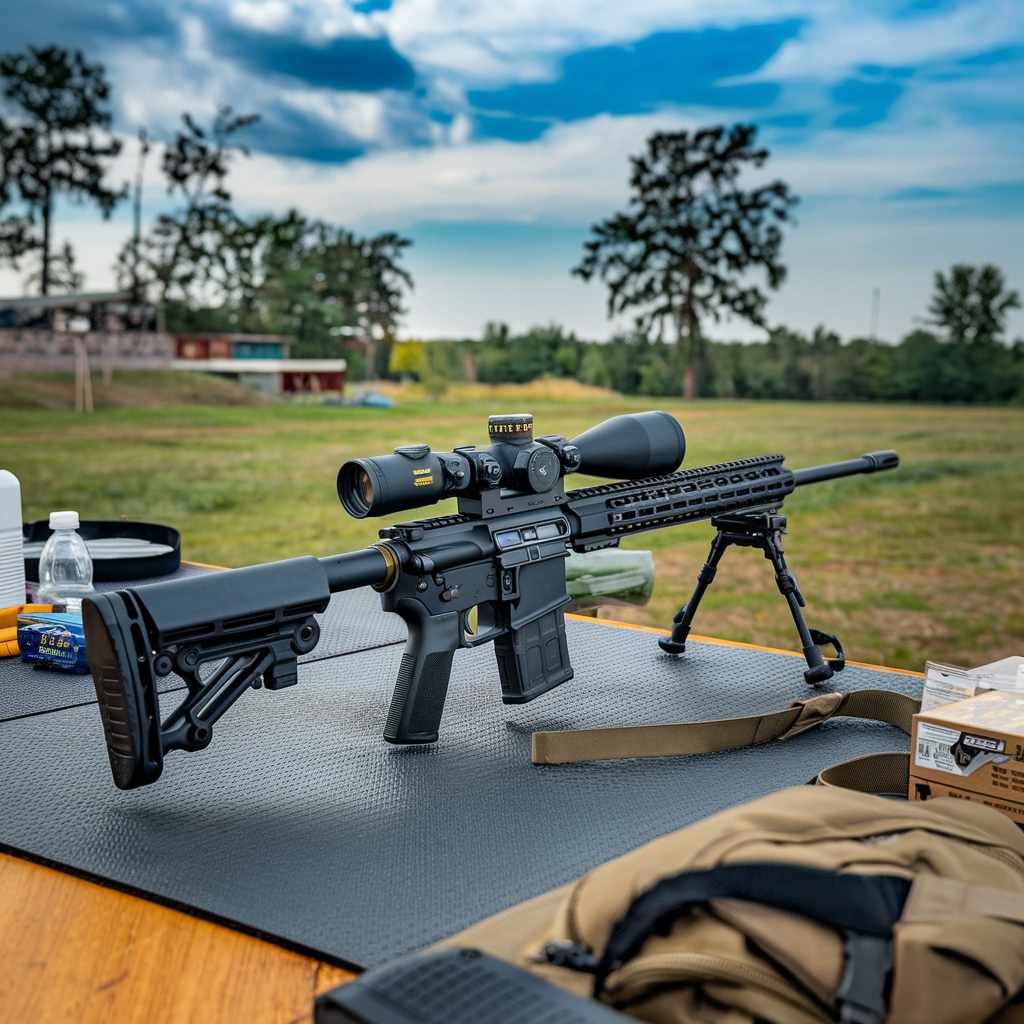A Guide to Long-Range Shooting Techniques

A Guide to Long-Range Shooting Techniques
Mastering long-range shooting is a skill that requires patience, practice, and the right techniques. Whether you’re a beginner or an experienced marksman, understanding the fundamentals of precision shooting can make the difference between success and frustration. In this guide, we’ll break down essential long-range shooting techniques to help you improve accuracy and confidence with every shot.
Understanding the Basics
Before diving into advanced methods, it’s important to grasp the core principles of long-range shooting. At its heart, this discipline revolves around controlling three key variables:
- Ballistics: The study of a bullet’s flight path, including trajectory, wind drift, and drop over distance.
- Equipment: Your rifle, scope, and ammunition must be optimized for consistent performance.
- Technique: Proper form, breathing, and trigger control are essential for hitting targets at extended ranges.
When these fundamentals are aligned, you’ll establish a strong foundation for success.
Choosing the Right Equipment
Your gear plays a critical role in long-range shooting. Here are the most important components to consider:
Optics
A high-quality scope is essential for precision. Look for a scope with a large objective lens, adjustable turrets, and a first focal plane reticle. These features allow for accurate range estimation and quick adjustments in changing conditions.
Rifle
The rifle should be chambered in a caliber suited for long distances, such as .308 Winchester, 6.5 Creedmoor, or .300 Win Mag. Ensure the barrel length and twist rate complement your chosen ammunition.
Ammunition
Select ammunition that is consistent in velocity and weight. Match-grade rounds are ideal for reducing variability in your shots.
Accessories
- Bipod: Stabilizes the rifle for a steady aim.
- Rangefinder: Accurately measures target distance.
- Wind Meter: Provides real-time wind data to adjust your aim.
Investing in reliable equipment ensures you’re not troubleshooting gear issues while in the field.
Mastering Shooting Techniques
Proper Shooting Position
The stability of your rifle depends on your shooting position. The prone position is the most stable for long-range shooting. When setting up, align the rifle with your body, keep your legs extended, and position your support hand under the stock or on a bag. This minimizes unnecessary movement during the shot.
Breathing Control
Breathing affects your aim. Take slow, deep breaths to stay calm. Just before pulling the trigger, exhale and pause at the bottom of your breath. This brief pause creates a steady window for firing.
Trigger Control
Jerking the trigger can cause missed shots. Instead, use the pad of your index finger and apply smooth, even pressure. Focus on squeezing the trigger directly to the rear without disturbing the rifle’s alignment.
Accounting for External Factors
External conditions can dramatically impact accuracy in long-range shooting. Here’s how to handle the most common challenges:
Wind
Wind is one of the most challenging factors in long-range shooting. Use your wind meter to estimate speed and direction. Adjust your aim by holding off the center of the target or dialing windage corrections into your scope. Practice reading wind cues such as grass movement or mirage patterns to refine your intuition over time.
Temperature and Air Density
Higher temperatures and lower air density reduce bullet drag, causing flatter trajectories. Conversely, cold weather increases drag and can shorten range. Regularly update your ballistic data to align with current conditions.
Shooting Angle
Shooting uphill or downhill changes the bullet’s effective flight path, often leading to shots hitting high. Use an angle indicator or calculate adjustments using ballistic apps to compensate for the incline or decline.
Practice Makes Perfect
No amount of theoretical knowledge will replace real-world practice. Spend time on the range engaging targets at various distances. Focus on:
- Building muscle memory through consistent routines.
- Testing different loads to identify optimal ammunition.
- Shooting under varied weather conditions to develop adaptability.
Tracking your results and analyzing missed shots will help you identify weaknesses and improve over time.
Using Technology to Your Advantage
Modern tools make long-range shooting more accessible. Ballistic calculators and smartphone apps can compute data like wind corrections, bullet drop, and angular adjustments. Laser rangefinders eliminate guesswork, providing exact measurements for immediate input into your scope settings.
Leverage technology to shorten the learning curve and increase efficiency during practice and field sessions.
Safety Considerations
Always prioritize safety during long-range shooting. Ensure your shooting range is clear of obstacles and individuals. Use proper hearing and eye protection, and never fire at a target unless you’re confident in the backstop. Following these precautions helps create a secure environment for everyone involved.
Conclusion
Long-range shooting is an art and science that demands focus, patience, and consistent effort. By mastering basic principles, investing in quality equipment, and practicing regularly, you’ll steadily develop the skills needed to hit your mark. Whether you’re aiming for competitive shooting excellence or honing skills for hunting, the techniques outlined here will set you on a path to greater success.
Now that you have a guide to long-range shooting techniques, it’s time to put your knowledge into action. Head to the range, challenge yourself, and enjoy the rewarding process of becoming a more skilled marksman.
For more firearm tips and techniques, explore our other expert guides here on 2AGun.com.



